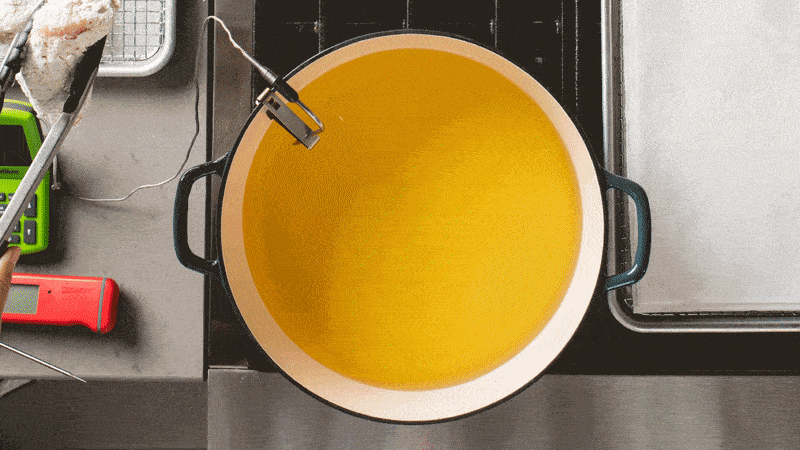The Best Lightweight Dutch Ovens
Equipment Review
A Dutch oven is an essential investment for serious cooks. We find the best options at every price and in every size.
Last Updated Mar. 14, 2024. Appears in America's Test Kitchen TV Season 19: How to Braise Everything

We tested four new Dutch ovens, including new models by Smithey and Lodge. We recommend three of them, but the Le Creuset 7¼ Quart Round Dutch Oven remains our top choice.
After decades of testing, we still think that the Le Creuset 7¼ Quart Round Dutch Oven is the best Dutch oven on the market. It simmers, bakes, and braises beautifully. It is incredibly durable, while also being the lightest and easiest-to-use enameled Dutch oven of its size. Our Best Buy is the 7-quart Cuisinart Chef’s Enameled Cast Iron Casserole. This model is a bit heavier and less durable than our favorite, but it performs just as well and is about a quarter of the price.
If you want to spend less or if you have slightly less storage space, we also recommend the 5.5- and 5-quart versions of our winner and Best Buy. And if you’re looking for a small Dutch oven that can serve as a heavy-duty saucepan, we like the 3- and 3.5-quart versions of our favorite and Best Buy as well.
Finally, if you’re looking for a Dutch oven that isn’t made of heavy cast iron, you can read about the best alternatives in our Lightweight Dutch Oven review.
What You Need to Know
Is there anything you can’t do with a Dutch oven? We use these large, heavy-duty pots for boiling, searing, frying, braising, and baking and for sous vide cooking. We turn them into smokers, steamers, coolers, and panini presses. They are the true workhorses of the kitchen; many of us use them every day.
These essential pots come in different sizes and materials, though cast iron and ceramic are the most common.
What Size Dutch Oven Should You Get?
We think that a 7-quart Dutch oven is the best option for most people, as it provides ample room for anything you’d want to cook, from a whole chicken to a batch of baked ziti.
But if you’re short on storage space or funds, a smaller, less expensive 5- to 6-quart model could be the right choice. These models can do everything a 7-quart model can, from cooking full recipes of soups and stews to baking large loaves of bread—with a few minor differences. Because they’re smaller, you may need to brown meat, sauté vegetables, or deep-fry foods in more batches, and it may take a little longer to reduce sauces in them. But overall, they offer good value for their lower cost and slightly smaller footprint, and they weigh a touch less than larger versions as well.
We also love even smaller Dutch ovens with capacities of 3 to 4 quarts, though they’re more limited in their capabilities. Think of them as heavy-duty saucepans—great for littler tasks, such as making rice, warming leftovers, or cooking recipes that serve two.
Are Expensive Dutch Ovens Worth the Money?
You don’t have to spend a ton to get a good Dutch oven—our Best Buys by Cuisinart perform almost as well as our expensive winners by Le Creuset and at about a quarter of the...

The mission of America’s Test Kitchen Reviews is to find the best equipment and ingredients for the home cook through rigorous, hands-on testing. We stand behind our winners so much that we even put our seal of approval on them.

Miye is a senior editor for ATK Reviews. She covers booze, blades, and gadgets of questionable value.

Hannah is an executive editor for ATK Reviews and cohost of Gear Heads on YouTube.

Valerie is an associate editor for ATK Reviews. In addition to cooking, she loves skiing, traveling, and spending time outdoors.

This is a members' feature.